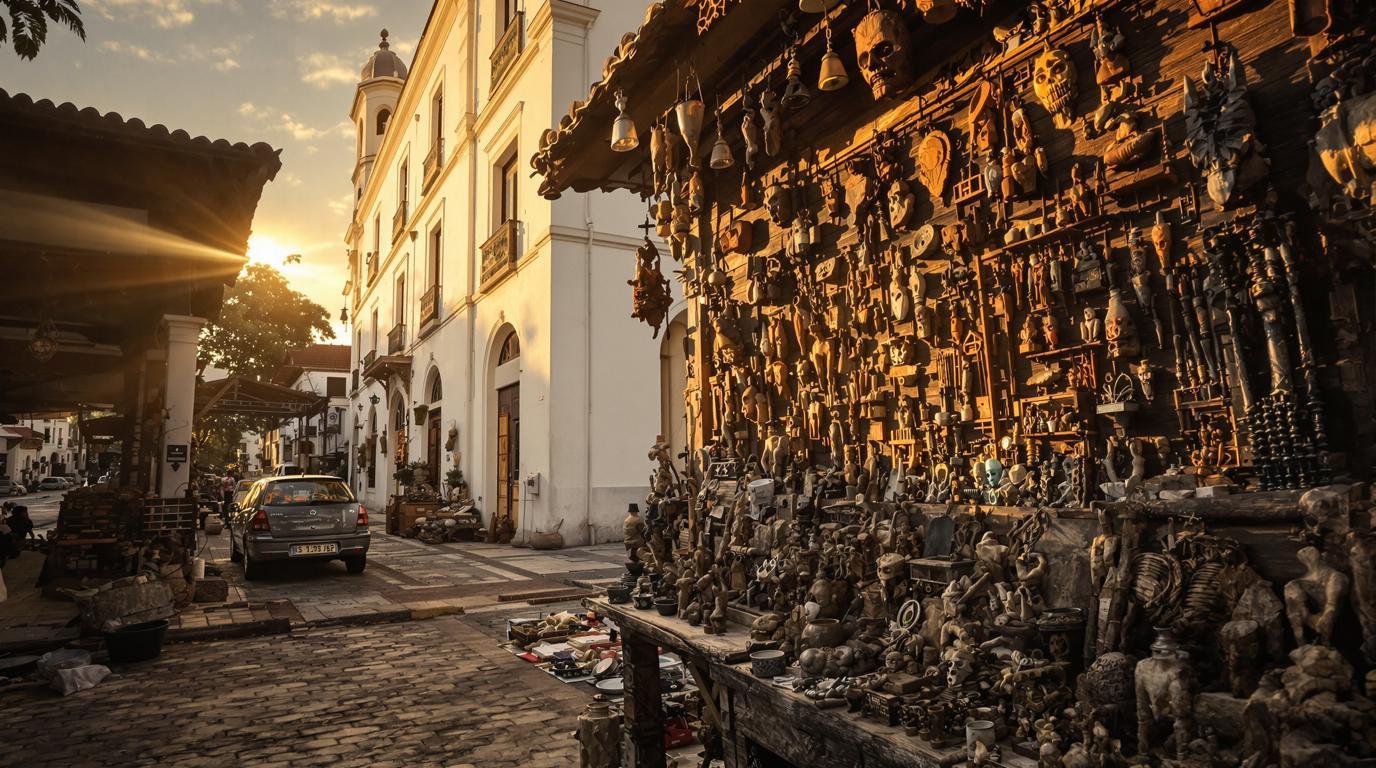Lomé: West Africa’s Hidden Port Jewel Where Vibrant Markets and Cultural Treasures Await
The rhythmic heartbeat of West Africa’s most intriguing port city
Lomé, Togo’s captivating capital, pulses with an energy unlike any other port city in West Africa. Stretching along the Gulf of Guinea, this maritime gem offers a fascinating blend of French colonial architecture, spirited markets, and authentic cultural experiences that remain refreshingly untouched by mass tourism. As morning light spills across the coastline, fishermen haul in their catches while market women arrange vibrant displays of fabrics and spices—scenes that have played out for generations.
Grand Marché: A sensory explosion where centuries of trade converge
The crown jewel of Lomé’s commercial life is undoubtedly the Grand Marché, a sprawling, multi-level marketplace where hundreds of vendors create a kaleidoscope of colors, sounds, and aromas. Unlike the polished souks of Morocco or the curated markets catering to tourists in other destinations, Lomé’s Grand Marché offers an authentic trading experience where locals and visitors bargain side by side.
“Our market tells the story of Lomé—we’ve been traders for generations, connecting West Africa’s goods with the world,” explains Madame Abla, whose fabric stall has operated for three decades.
The unexpected treasures of the world’s largest Fetish Market
For travelers seeking cultural encounters that challenge Western perspectives, Lomé’s Fetish Market offers a window into traditional West African spiritual practices. Here, animal parts, herbs, and carved figurines create unusual displays that serve the region’s voodoo traditions. This market isn’t for the faint-hearted, but it provides remarkable insight into beliefs that have shaped the region for centuries—a far cry from the ancient Andean plant traditions but equally rich in cultural significance.
Palais de Lomé: Colonial grandeur transformed into cultural renaissance
The recently renovated Palais de Lomé stands as a testament to the city’s evolving identity. Once the German governor’s residence during colonial rule, this stately building has been transformed into a vibrant cultural center showcasing contemporary African art amid lush botanical gardens. The contrast between colonial architecture and modern African expression creates a powerful narrative about Togo’s journey.
Coastal serenity just steps from urban energy
While Lomé’s markets buzz with activity, its palm-fringed beaches offer peaceful respite. Unlike the crowded shores of more developed tourist destinations, Lomé’s coastline provides space for contemplation as fishermen mend their nets against a backdrop of breaking waves. Those seeking unique overnight experiences might be reminded of transparent geodesic domes in the French mountains, though here, beachside accommodations offer their own brand of magic.
Sacred Heart Cathedral: Architectural marvel with surprising origins
The twin spires of Sacred Heart Cathedral rise unexpectedly from Lomé’s skyline, showcasing impressive German neo-Gothic architecture with a distinctly West African interpretation. Built in 1902, its striking orange and white façade stands as a reminder of Togo’s complex colonial past and enduring religious traditions. The cool interior offers welcome relief from the tropical heat outside.
“Our cathedral represents both our history and our faith. It’s a place where Europeans and Africans created something beautiful together despite difficult circumstances,” notes local historian Pierre Agbobli.
Culinary adventures that awaken forgotten tastes
Lomé’s food scene rewards the adventurous eater with flavors both powerful and nuanced. Sample fresh grilled fish with piment, a fiery local chili sauce, at waterfront restaurants, or try fufu (pounded yam) with richly spiced soups at local eateries. For a truly immersive experience, visit Fufu Express Bar-Resto La Portuaire near the port to witness—or even participate in—the traditional fufu-making process.
Beyond Lomé: Day trips that reveal Togo’s diverse landscape
Just as hidden Caribbean-blue waters lie just beyond Sardinia, Lomé offers gateways to surprising landscapes. A short journey brings travelers to Lake Togo, where traditional stilt villages seem to float above tranquil waters. Further north, the Koutammakou region reveals the famous “Batammariba” clay tower-houses—a UNESCO World Heritage site showcasing indigenous architecture that has evolved over centuries.
Village Artisanal: Where ancient crafts find contemporary expression
For those captivated by handmade treasures, Village Artisanal offers a less frenetic alternative to the Grand Marché. Here, artisans work with materials from wood to recycled metal, creating both traditional and innovative pieces. The collaborative atmosphere evokes something of the community spirit found in Turkey’s unique cave accommodations—places where traditional methods meet modern creativity.
Stargazing from the forgotten rooftops of Lomé
While not as deliberately designed for astronomical viewing as climate-controlled desert domes, Lomé’s rooftop terraces offer their own spectacular night skies. As evening falls, locals gather on these elevated spaces to catch sea breezes and watch constellations emerge above the Gulf of Guinea—a simple pleasure that connects generations.
In Lomé, the vibrant pulse of West African life remains authentically unfiltered, offering travelers a rare glimpse into a world where tradition and modernity dance in perpetual negotiation. This maritime city doesn’t just invite you to visit—it beckons you to participate in its unfolding story, one market transaction, beach sunset, and cultural encounter at a time.
